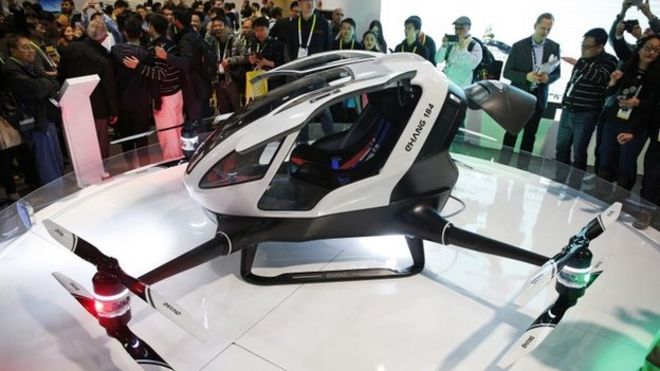for personal use.
Quote:
“Our goal is to develop an aircraft for use in everyday life,” explains Daniel Wiegand, CEO and one of the company’s four founders.
“We are going for a plane that can take off and land vertically and does not need the complex and expensive infrastructure of an airport.
“To reduce noise and pollution, we are using electric engines so it can also be used close to urban areas.”
Founded in February 2015 by four engineers and doctoral students from the Technical University of Munich in Germany, Lilium has already proved the concept with several scale, 25 kg prototypes and is now developing its first ultralight vertical takeoff and landing aircraft.
Quote:
The Lilium vehicle combines the benefits of helicopters and fixed-wing aircraft while avoiding their drawbacks. While initially restricted to airfields, the goal is for it to take off vertically from almost anywhere – even from back gardens – it needs only an open flat area of about 15x15 m.
Although taking off and landing like a helicopter, by swiveling its engines it also functions as a very efficient aircraft that can travel at up to 400 km/h.
Entirely electric, the plane is much quieter during takeoff than helicopters thanks to its ducted fan engines. Its batteries, engines and controllers are redundant, making it a much safer design than conventional helicopters.
The plane is classed as a Light Sport Aircraft for two occupants, with the pilot’s license requiring 20 hours’ minimum training – almost like taking a driving license.


Quote:
“Our goal is to develop an aircraft for use in everyday life,” explains Daniel Wiegand, CEO and one of the company’s four founders.
“We are going for a plane that can take off and land vertically and does not need the complex and expensive infrastructure of an airport.
“To reduce noise and pollution, we are using electric engines so it can also be used close to urban areas.”
Founded in February 2015 by four engineers and doctoral students from the Technical University of Munich in Germany, Lilium has already proved the concept with several scale, 25 kg prototypes and is now developing its first ultralight vertical takeoff and landing aircraft.
Quote:
The Lilium vehicle combines the benefits of helicopters and fixed-wing aircraft while avoiding their drawbacks. While initially restricted to airfields, the goal is for it to take off vertically from almost anywhere – even from back gardens – it needs only an open flat area of about 15x15 m.
Although taking off and landing like a helicopter, by swiveling its engines it also functions as a very efficient aircraft that can travel at up to 400 km/h.
Entirely electric, the plane is much quieter during takeoff than helicopters thanks to its ducted fan engines. Its batteries, engines and controllers are redundant, making it a much safer design than conventional helicopters.
The plane is classed as a Light Sport Aircraft for two occupants, with the pilot’s license requiring 20 hours’ minimum training – almost like taking a driving license.




